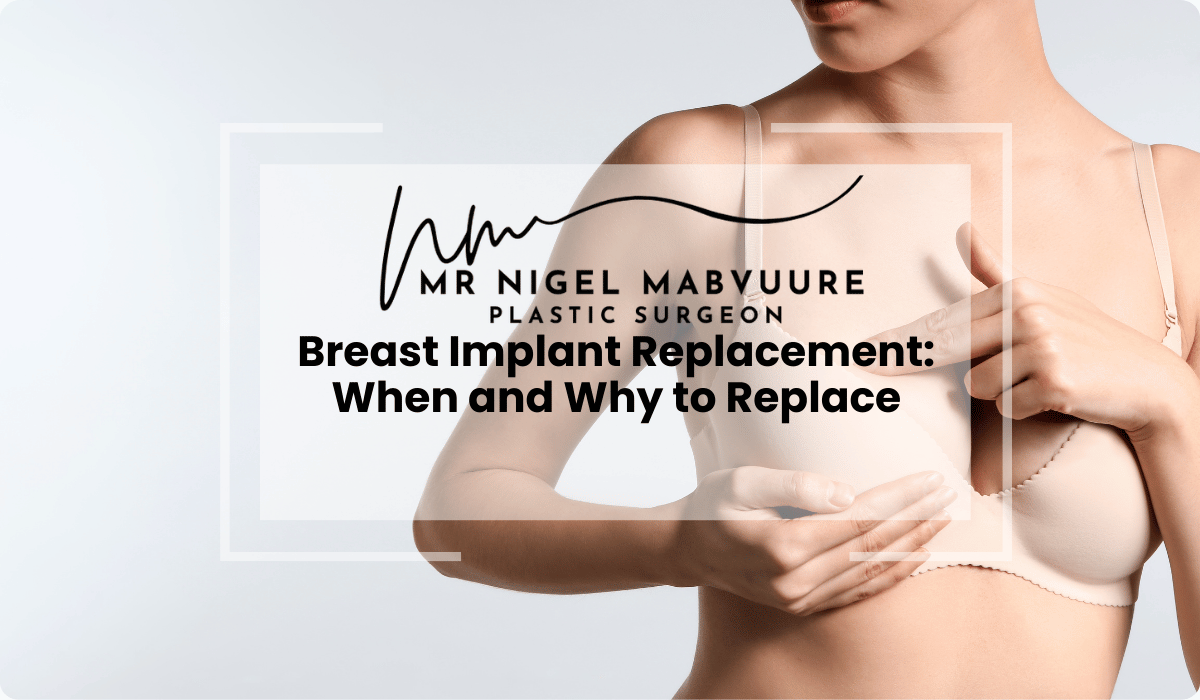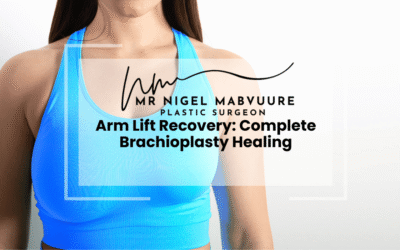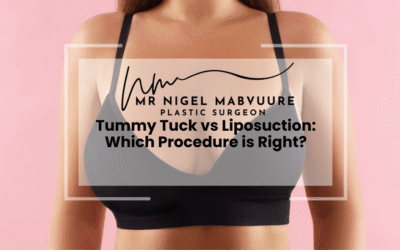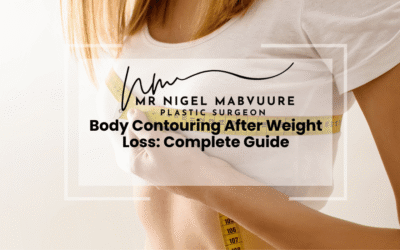Essential Breast Implant Maintenance Guide
Understanding the lifespan and care of your breast implants is crucial for maintaining both aesthetics and health. Here’s what every implant patient should know:
Implant Lifespan
Most implants should be evaluated after 10-15 years, with silicone typically lasting 15-20 years and saline 10-15 years under optimal conditions.
Warning Signs
Schedule a consultation if you notice changes in breast shape, size, firmness, persistent pain, or asymmetry that wasn’t previously present.
Monitoring Protocol
Regular self-examinations monthly, professional clinical examinations annually, and imaging studies (MRI/ultrasound) every 2-3 years after the first 5 years are recommended.
Revision Considerations
Implant replacement offers an opportunity to update size, type, and profile based on changing preferences, lifestyle needs, or to benefit from advanced implant technologies.
Long-term Care
Maintain stable body weight, wear properly fitted supportive bras during physical activity, and protect chest scars from sun exposure to maximize implant longevity.
Table of Contents
- How Long Do Breast Implants Last? Understanding Timelines
- Signs Your Breast Implants May Need Replacement
- Top 5 Reasons for Breast Implant Exchange or Revision
- The Breast Implant Revision Surgery Process Explained
- Upgrading Your Look: Changing Implant Size and Type
- Recovery After Breast Implant Replacement: What to Expect
- Long-Term Care: Maintaining Your New Breast Implants
- When to Schedule a Breast Implant Consultation
How Long Do Breast Implants Last? Understanding Timelines
One of the most common questions patients ask is, “How long do breast implants last?” While manufacturers often state that modern implants can last a lifetime, the reality is more nuanced. Most plastic surgeons recommend considering replacement or at least evaluation after 10-15 years.
Silicone implants typically have a slightly longer lifespan than saline options. Modern silicone gel implants can maintain their integrity for 15-20 years in optimal conditions, while saline implants generally last 10-15 years before concerns about rupture increase significantly. However, these are averages, and individual experiences vary considerably.
It’s important to understand that breast implants are not considered lifetime devices by regulatory bodies like the MHRA (Medicines and Healthcare products Regulatory Agency). While there’s no mandatory replacement timeline if your implants remain in good condition, regular monitoring becomes increasingly important as implants age.
The implant replacement timeline depends on several factors, including:
- Implant type and quality
- Surgical technique used during placement
- Your body’s response to the implants
- Lifestyle factors and physical activities
- Proper post-operative care and follow-up
Annual check-ups with your plastic surgeon become especially important after the 10-year mark to monitor for silent ruptures or other complications that might necessitate implant replacement.
Signs Your Breast Implants May Need Replacement
Recognising when breast implants require replacement is crucial for maintaining both aesthetic results and your health. While some issues are immediately apparent, others may develop gradually or remain undetectable without imaging studies.
The most obvious physical signs include changes in breast shape, size, or symmetry. If you notice your breasts developing an unusual appearance—such as rippling, wrinkling, or visible implant edges—this often indicates implant malposition or rupture. Similarly, increased firmness, persistent pain, or discomfort can signal capsular contracture, where scar tissue around the implant tightens abnormally.
For silicone implants, “silent ruptures” pose a particular challenge as the cohesive gel may remain contained within the capsule without obvious external changes. This is why regular MRI or ultrasound screening is recommended, typically beginning 3-5 years after implantation and continuing every 2-3 years thereafter.
Other indicators that might suggest the need for breast implant replacement include:
- Development of breast asymmetry that wasn’t previously present
- Changes in sensation around the breast area
- Unusual movement of implants during physical activity
- Hardening of breast tissue or implants
- Thinning of tissue over the implant resulting in visible edges
- Development of animation deformity (movement with muscle contraction)
If you experience any of these symptoms, scheduling a consultation with your plastic surgeon is essential to determine whether implant replacement is necessary.
Top 5 Reasons for Breast Implant Exchange or Revision
Breast implant exchange or revision surgery addresses numerous concerns that may develop after initial augmentation. Understanding the most common reasons for these procedures can help you recognise when to consider consulting your surgeon.
1. Implant Rupture or Deflation
The most medically necessary reason for implant replacement is rupture. With saline implants, deflation is usually evident as the breast noticeably shrinks when saline is absorbed by the body. Silicone implant ruptures may be “silent,” detected only through imaging, but can eventually lead to capsular contracture or other complications if left untreated.
2. Capsular Contracture
This condition occurs when excessive scar tissue forms around the implant, causing the breast to feel firm or hard and potentially distorting its shape. Ranging from mild (Grade I) to severe (Grade IV), moderate to severe cases often require surgical intervention to remove the hardened capsule and replace the implant.
3. Size Change Preferences
Many women choose to revise their breast augmentation to change implant size—either larger or smaller—based on lifestyle changes, aesthetic preferences, or to address physical discomfort associated with larger implants. This is one of the most common elective reasons for breast augmentation revision.
4. Implant Malposition
Over time, implants may shift from their original position, resulting in asymmetry, bottoming out (downward displacement), symmastia (“uniboob” appearance), or lateral displacement. These positioning issues typically require surgical correction to restore proper aesthetic appearance.
5. Desire for Updated Implant Technology
Advancements in implant technology may motivate women with older implants to upgrade to newer-generation options with improved safety profiles, more natural feel, or reduced complication rates. This is particularly common for women who received implants more than a decade ago.
The Breast Implant Revision Surgery Process Explained
Breast implant revision surgery is a specialised procedure that often requires more planning and technical expertise than the initial augmentation. Understanding the process can help you prepare adequately and set realistic expectations.
The revision surgery typically begins with a thorough consultation and planning phase. Your surgeon will evaluate your current implants, tissue characteristics, and aesthetic goals through physical examination and possibly imaging studies like ultrasound or MRI. This evaluation guides the surgical approach and implant selection.
During the procedure, which is usually performed under general anaesthesia, the surgeon often utilises the original incision sites to minimise additional scarring. After accessing the implant pocket, several steps may occur depending on your specific situation:
- Capsulectomy: Removal of some or all of the scar tissue capsule that forms around implants
- Pocket Adjustment: Modification of the implant pocket to correct positioning issues
- Implant Exchange: Replacement with new implants of appropriate size, shape, or material
- Additional Techniques: Procedures such as internal suturing, use of acellular dermal matrix, or tissue reinforcement may be employed to address specific concerns
The complexity of revision surgery often exceeds that of primary augmentation, particularly when addressing complications like capsular contracture or significant malposition. The procedure may take 1-3 hours depending on the extent of correction needed.
It’s important to note that revision surgery may sometimes require a staged approach, with multiple procedures performed months apart to achieve optimal results, especially in complex cases involving significant tissue damage or multiple complications.
Upgrading Your Look: Changing Implant Size and Type
Breast implant replacement surgery offers an excellent opportunity to refine and update your aesthetic appearance. Many women choose to change their implant size or type during replacement to better align with their current lifestyle, body changes, or evolving aesthetic preferences.
When considering size changes, it’s important to understand the anatomical constraints and long-term implications. Upsizing requires adequate tissue coverage and may necessitate techniques like dual-plane positioning or fat grafting to ensure natural-looking results. Conversely, downsizing might leave excess skin, potentially requiring a breast lift (mastopexy) to restore a youthful contour.
Beyond size considerations, implant replacement provides an opportunity to upgrade to the latest implant technology. Recent advancements include:
- Cohesive Gel Implants: Often called “gummy bear” implants, these maintain shape even when cut and offer a more natural feel with reduced risk of visible rippling
- Anatomical (Teardrop) Shapes: These contoured implants can create a more natural breast profile with fullness in the lower pole
- Improved Shell Technology: Modern implant shells are designed to reduce complications like rupture and capsular contracture
- Textured vs. Smooth Options: Different surface types offer various benefits in terms of movement, stability, and tissue integration
The decision to change implant profiles (projection) can also significantly impact your results. Higher profile implants create more pronounced projection with a narrower base, while moderate or low profile options provide a more subtle enhancement that may better complement a wider chest.
Your surgeon will help you navigate these choices through detailed measurements, 3D imaging in some cases, and thorough discussion of how different implants might interact with your existing anatomy to achieve your desired outcome.
Recovery After Breast Implant Replacement: What to Expect
The recovery process following breast implant replacement generally progresses more quickly than recovery from initial breast augmentation, though individual experiences vary based on the complexity of the revision. Understanding what to expect can help you prepare appropriately and ensure optimal healing.
Immediately after surgery, you’ll likely experience moderate discomfort, swelling, and tightness in the chest area. Most surgeons prescribe pain medication for the first few days, after which over-the-counter analgesics are usually sufficient. Wearing a supportive surgical bra continuously for 4-6 weeks helps minimise swelling and supports proper implant positioning.
The typical recovery timeline includes:
- First 24-48 Hours: Rest with limited upper body movement; someone should stay with you during this period
- First Week: Restricted to light activities with no lifting above 2-3 kg; initial post-operative follow-up typically occurs
- 2-3 Weeks: Return to non-strenuous work and gradually increased daily activities; significant reduction in swelling and discomfort
- 4-6 Weeks: Resumption of most normal activities including non-impact exercise; implants begin settling into position
- 8-12 Weeks: Full return to all activities including high-intensity workouts; final results becoming apparent as swelling resolves completely
Recovery from complex revisions involving capsulectomy or significant pocket modifications may require additional healing time. Your surgeon will provide specific guidelines based on your particular procedure.
Following all post-operative instructions is crucial for optimal results and reduced complication risks. This includes incision care, activity restrictions, and attending all scheduled follow-up appointments to monitor your healing progress.
Long-Term Care: Maintaining Your New Breast Implants
Proper maintenance and monitoring of your new breast implants are essential for maximising their longevity and preserving your aesthetic results. Establishing a routine for long-term implant care helps detect potential issues early and ensures you enjoy your enhanced appearance for years to come.
Regular self-examinations are your first line of monitoring. Perform monthly checks to familiarise yourself with your implants’ normal feel and position. Note any changes in symmetry, shape, or consistency, as these could indicate potential complications requiring professional evaluation.
Professional monitoring should follow a structured schedule:
- Annual clinical examinations by your plastic surgeon for the first five years
- Imaging studies as recommended (typically beginning 3-5 years post-surgery for silicone implants)
- More frequent check-ups if you experience symptoms or concerns
Beyond medical monitoring, lifestyle factors significantly impact implant longevity. Maintain stable body weight to prevent breast tissue changes that could affect implant positioning. Wear properly fitted, supportive bras, particularly during high-impact activities, to minimise stress on the implants and surrounding tissues.
Sun protection for chest and breast area scars is crucial, especially in the first year after surgery. UV exposure can cause permanent darkening of scars and potentially accelerate skin ageing over implants.
Be proactive about seeking medical attention if you notice changes in your implants or experience symptoms like pain, hardening, or asymmetry. Early intervention often leads to simpler solutions and prevents more complex complications. With proper care and regular monitoring, your revised breast implants can provide satisfying results for many years.
When to Schedule a Breast Implant Consultation
Knowing when to schedule a breast implant consultation is crucial for maintaining both the aesthetic quality of your augmentation and your overall health. While regular follow-ups are important, certain circumstances warrant prompt professional evaluation.
As a general guideline, schedule a consultation if:
- Your implants are 10+ years old: Even without symptoms, implants approaching or exceeding a decade in age should be professionally evaluated to assess their integrity
- You notice physical changes: Any alterations in breast shape, symmetry, firmness, or the development of pain require prompt assessment
- You experience systemic symptoms: Unexplained fatigue, joint pain, or other systemic symptoms that might be associated with implant complications
- You’re planning major life changes: Significant weight changes, pregnancy, or lifestyle modifications that might affect your implants or your satisfaction with them
- You’re
Frequently Asked Questions
How do I know if my breast implant has ruptured?
Saline implant ruptures are usually obvious, causing noticeable deflation as the fluid is absorbed by your body. Silicone implant ruptures are often “silent” with no immediate visible signs. Possible indicators include changes in breast shape, asymmetry, swelling, pain, hardening, or soft lumps. Only imaging tests like MRI or ultrasound can definitively diagnose a silicone implant rupture, which is why regular screening is recommended after the first 5-6 years.
Is breast implant replacement more painful than the original surgery?
Most patients report that breast implant replacement surgery is less painful than their original augmentation. This is because the breast pocket has already been created, resulting in less trauma during surgery. However, complex revisions involving capsulectomy or significant pocket adjustments may cause discomfort similar to primary augmentation. Recovery is typically faster, with most patients returning to normal activities within 2-4 weeks.
Will insurance cover my breast implant replacement surgery?
Insurance typically doesn’t cover breast implant replacement for cosmetic reasons or normal aging. However, coverage may be available for implant rupture, severe capsular contracture, or other medical complications. Some manufacturers offer warranty programs that partially cover replacement costs due to implant failure. Always check your specific insurance policy and implant warranty details, and obtain pre-authorization if coverage is a possibility.
Can I combine breast implant replacement with other procedures?
Yes, breast implant replacement is commonly combined with other procedures for comprehensive rejuvenation. Popular combinations include breast lift (mastopexy) to address sagging, fat grafting to improve contour and coverage, or scar revision to improve the appearance of old incisions. Some patients also choose to combine implant replacement with body contouring procedures like tummy tuck or liposuction for a more complete transformation.
What happens if I decide to remove my implants without replacing them?
Implant removal without replacement (explantation) is an increasingly common choice. After removal, your breasts will likely appear smaller and possibly more ptotic (droopy) than before your original augmentation. The degree depends on your age, skin elasticity, original breast size, and how long the implants were in place. Many surgeons recommend combining explantation with a breast lift to address excess skin and restore a more youthful contour. Fat grafting may also be an option to restore some volume naturally.
How much does breast implant replacement surgery cost?
Breast implant replacement surgery typically costs between £4,500-£7,500 in the UK, depending on complexity. Simple exchanges are on the lower end, while complex revisions with capsulectomy or additional procedures fall on the higher end. This price usually includes surgeon’s fees, anesthesia, facility costs, and the implants themselves. Most practices offer financing options to help manage these costs. Always ensure you understand all potential fees before scheduling surgery.
Can I breastfeed after breast implant replacement?
Most women can successfully breastfeed after breast implant replacement, particularly if they were able to breastfeed with their original implants. The ability to breastfeed depends primarily on the surgical technique used in both the original and replacement procedures. Incisions around the areola and submuscular implant placement may have some impact on milk production or ducts. Discuss any future breastfeeding plans with your surgeon, as this may influence the surgical approach chosen for your implant replacement.




